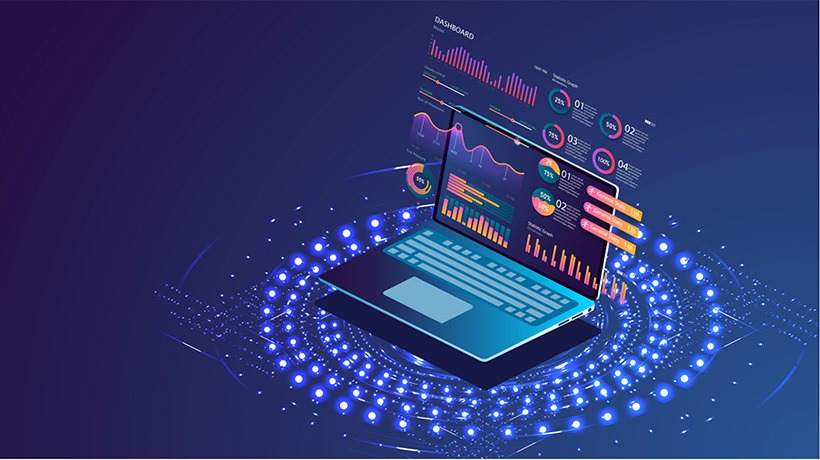Data In Day-To-Day Life
Every day 2.5 quintillion bytes of data are created and stored in databases. Most of the decision-making daily is a result of statistical analysis. Facebook knows to suggest new friends, Netflix knows the television shows you would like, and you look up Trip Advisor to check the highest-rated restaurant, betting on statistical data that you will have a good stay. GoodReads is another popular book recommendation engine. Its algorithm leverages the search of over 20 million different data points, considering the preferences of nearly 6 million users, as well as the rating system, which is the key component of the site.
Another striking online service that makes use of data and databases is Pandora Radio. This service provides various song recommendations based on users' music preferences. IBM Watson, a pioneer in the field of cognitive medical analysis, uses diversified medical information across hospital branches to help doctors save time during diagnosis. But how is this data visualized and analyzed to provide accurate statistical information to users?
This data-informed approach is emerging from a new generation of data mining. Data mining is the process of analyzing hidden patterns of data, segregating and forming meaningful relationships between them. But, can data mining and corporate eLearning shake hands?
Data Mining In Corporate eLearning
All corporate learners deserve a great learning experience, one that affords every opportunity for them to grow. But every corporate learner follows a unique roadmap to build their career. Every L&D department in the organization needs the right data in the right format and at the right time. This data enables them to understand their learners and guide them aptly on their respective learning journeys.
All said and done, educational data is huge and cannot be analyzed using spreadsheets. They need an in-depth analysis of the hidden data in order to understand learners and their learning behavior. Now, enters EDM. Before we understand what EDM is, we need to know what learner data is.
What Is Learner Data?
Data helps us make connections that uncover insights about a learner's learning behaviors. These learning behaviors, when analyzed, form a pattern that helps the L&D and Instructional Designers understand the learner's needs. The pattern that is collected and interpreted is called "learner data." The learner data usually includes academic and demographic information—as well as information from assessments, online surveys and polls, leaderboards, L&D observations, and the learner's digital body language. With this in mind, let's understand what EDM is and its uses in corporate eLearning.
Educational Data Mining
eLearning is a blessing to data miners. eLearning has large amounts of learner data, which are endlessly generated and ubiquitously available. Learner data is an exponentially growing nightmare, in which unstructured information chokes the L&D department without providing any articulate knowledge. EDM was born to tackle problems like this. EDM is emerging as a research area with a suite of computational, psychological and research approaches for understanding how learners learn. This now leaves us with a question: How can EDM have an impact on corporate eLearning?
3 Dramatic Uses Of EDM In Corporate eLearning
EDM aims at using algorithms to leverage better learning results in order to enhance the learners' decision-making. Let's see how EDM can be used in corporate eLearning.
1. Discovery Of Learning Behaviors With Data Models
EDM is a unique technique that involves forming a validated model for learner behaviors. The models are formed by the learner's digital footprints. When these footprints are analyzed on a regular basis, they form a pattern. This pattern is called the map. L&D professionals can analyze this map to form questions about the learner's learning behavior. This technique is called map probing.
Using this technique, L&D professionals can build models to answer questions such as:
- What sequence of the topic is most effective for learners?
- What learner actions are more associated with learning?
- What learner actions indicate satisfaction, engagement, learning progress, etc.?
- What features of an LMS will lead to better learning?
- What will predict the learner's success?
2. Usage Of Learning Analytics And Visual Data Analytics
EDM helps determine the hidden learner data in the learning environment. The learner data is collected and reported by using learning analytics. The collected learner data will be in the form of tables and relationships, devoid of the learner's ability to understand it. Hence, they should be visualized in the form of graphics to tap the ability of learners to understand their progress. Thus, visual data analytics is used.
Learning and visual data analytics apply EDM models to answer questions such as:
- When are the learners ready to move on to the next topic?
- When are the learners falling behind in a course?
- When is a learner at risk of not completing a course?
- What grade is a learner likely to get without intervention?
- What is the best next course to be suggested to the learner?
- Should a learner be offered additional help?
3. Instructional Principle Analysis
EDM helps address certain questions related to Instructional Design principles and strategies in order to make learning environments more learner-centric. Questions such as:
- Which Instructional Design practice is effective at promoting learning (e.g., microlearning vs. game-based learning)?
- Which curriculum to follow?
- Does the newly added curriculum work better when compared to the previous one?
EDM helps in studying the effectiveness of different learning system components and instructional practices that can contribute to the design of better learning systems. Thus, EDM will have strong implications for eLearning.
Conclusion
To cut a long story short, clearly, there is a place for EDM in eLearning. As training and content move online, EDM will enable eLearning to be always assessed at all levels. L&D professionals will benefit from understanding the possibilities of the development of EDM. EDM will continue to grow in the coming years.
References:
Suggested Reading:
Originally published at tesseractlearning.com.

